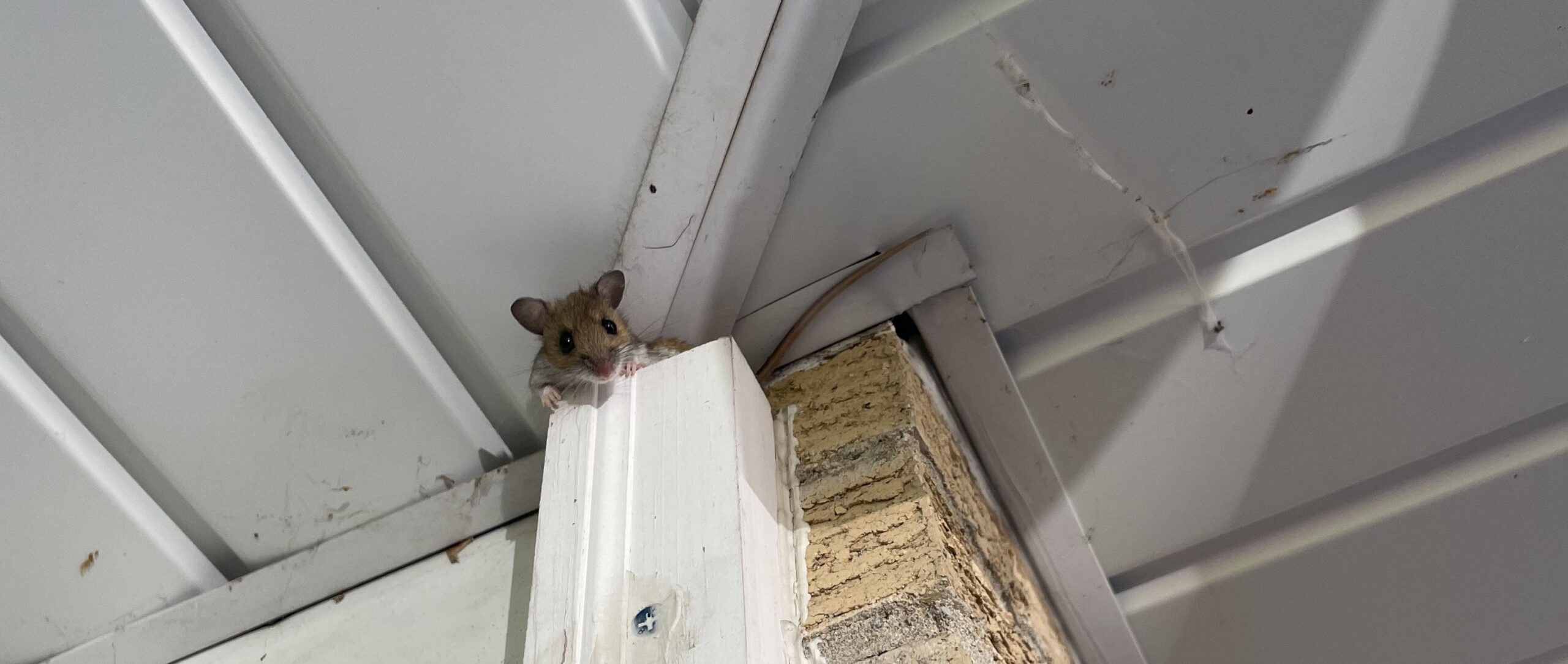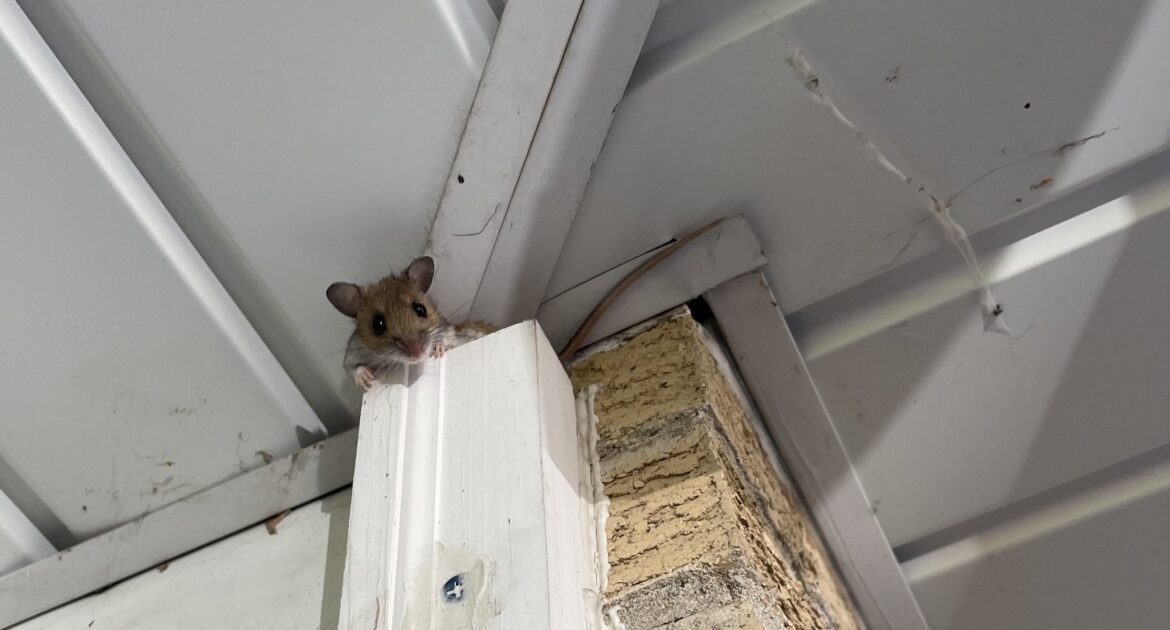Mice, those small yet fascinating creatures, have made themselves at home in both urban and rural environments, often going unnoticed until their presence becomes a nuisance. Their adaptability to various habitats allows them to thrive in gardens, basements, and attics, where they seek food and shelter.
While mice play a natural role in the ecosystem—contributing to seed dispersal and serving as prey for larger predators—their rapid increase in population can lead to significant ecological disruptions. When their numbers soar, they not only compete with native wildlife for resources but also pose health risks to humans by spreading disease.
As experts in wildlife removal, we at Skedaddle Humane Wildlife Control in Kitchener understand the delicate balance of nature and the importance of managing mouse populations effectively. Our commitment to humane solutions ensures that while we mitigate the issues caused by overpopulation, we also consider the broader environmental implications.
This blog digs into the role of mice in their ecosystems, the problems that stem from their overabundance, and how responsible removal strategies can foster a healthier environment for all creatures.
Ecosystem Roles and Balance
Mice, often perceived merely as pests, are crucial components of our ecosystem. They serve as a vital food source for various predators including owls, hawks, snakes, and even larger mammals. This diet forms a critical pillar in the food chain, supporting local biodiversity. Without mice, these predators would lack an essential part of their diet, potentially leading to imbalances in wildlife populations.
Beyond being prey, mice contribute significantly to ecological processes like seed dispersal. Their foraging behavior helps in the spread of plant seeds, thereby aiding in plant diversity and forest regeneration. This activity helps maintain a balanced ecosystem and fosters a robust natural environment. Even as small rodents, their contributions can have extensive reach, influencing plant structures across large areas.
In many ways, mice act as silent gardeners. Their interactions with seeds and soil improve the quality of the land, impacting everything from the underbrush to towering trees. Understanding their constructive roles allows us to appreciate their existence beyond the confines of our homes.
Negative Impacts on Human Environments
Despite their ecological benefits, mice can pose serious threats when they invade human spaces. Their presence in homes and businesses introduces health risks through the transmission of diseases such as Hantavirus, Leptospirosis, and Salmonella. These diseases can spread easily through contact with rodent droppings, urine, and nesting materials, posing a threat to inhabitants’ well-being.
In agricultural settings, mice can devastate crops and contaminate food supplies. They gnaw on grains and stored foods, leading to significant losses. The contamination from their droppings and urine can render otherwise perfectly good food stocks unusable, impacting both human consumption and livestock feed.
The impact of these rodents isn’t just limited to the obvious damages. Their nesting habits can cause structural issues in buildings, gnawing through wires, insulation, and even pipes. This damage can lead to fire hazards or costly repairs, emphasizing the need for effective management strategies.
Economic Consequences
The presence of mice in urban and rural settings leads to substantial economic burdens. Property owners face costs related to repairs, food losses, and preventive measures. The expenses associated with repairing chewed wiring, replacing contaminated food, and addressing structural damage can quickly escalate, straining resources.
Municipalities also bear a financial burden. The need for public health interventions and infrastructure maintenance due to rodent activity demands considerable investment. Studies have shown that cities spend millions annually managing rodent populations and mitigating their impacts on public health and safety.
For businesses, the presence of these rodents can also tarnish reputations, leading to lost revenues and increased expenditure on pest control. This underscores the importance of adopting comprehensive approaches to manage and prevent infestations effectively.
Challenges in Control and Management
Controlling mouse populations effectively presents a myriad of challenges, largely due to their high reproductive rate and adaptability to various environments. Traditional methods, such as traps and poisons, often fall short of achieving long-term sustainability and can lead to unintended consequences within ecosystems. Here are some of the primary difficulties we face:
- Rapid Reproduction: Mice can breed as often as every 20 days, resulting in populations that can skyrocket in a short period. This quick turnover means that efforts to control their numbers may fail to keep pace with their breeding cycles.
- Adaptability: These creatures exhibit remarkable resilience in the face of changing environments. They quickly learn to avoid traps and are often wary of new objects within their territories, rendering traditional methods ineffective over time.
- Health Risks of Harmful Methods: Many conventional control methods can pose risks to non-target species, including pets and beneficial animals. Poisons may inadvertently harm wildlife and disrupt the food chain, leading to further ecological imbalances.
- Infrastructural Challenges: Urban development and the design of buildings can create ideal habitats for mice. Cracks and gaps in infrastructure provide easy access, making it difficult to implement deterrents effectively.
- Short-Term Solutions: Traditional approaches often aim for immediate results, neglecting long-term strategies that consider ongoing population dynamics and environmental health.
Integrating pest management approaches is crucial for establishing sustainable solutions. Such methodologies prioritize ecological balance and utilize a combination of practices, such as habitat modification, biological controls, and careful monitoring. By considering the impact of our actions on the environment, we can mitigate potential adverse effects while managing populations more effectively.
Sustainable and Humane Control Methods
Embracing humane and environmentally friendly control methods is essential for promoting biodiversity while effectively managing rodent populations. By utilizing innovative solutions, we can limit harm to ecosystems and ensure a safer environment for all inhabitants. Professional services provide the expertise needed to implement these methods properly. Here are some effective humane strategies:
- One-Way Doors: These innovative devices allow mice to exit a space without re-entering, creating a safe relocation method. Designed to reduce stress on the animals, one-way doors can help divert them to more suitable habitats without harm.
- Habitat Modification: By assessing and altering the environment, we can deter these rodents from settling in certain areas. This includes sealing cracks, eliminating food sources, and minimizing clutter that could potentially serve as nesting sites.
- Natural Predators: Encouraging the presence of natural predators can help maintain balance in local ecosystems. This can be achieved by creating habitats that attract birds of prey or using other small carnivores as part of an integrated approach.
- Ecological Monitoring: Regular monitoring of populations helps us understand trends and make informed decisions. By tracking activity and identifying potential entry points, we can better manage populations proactively rather than reactively.
- Electronic Deterrents: Devices that emit ultrasonic sounds can deter rodents without physical harm. These sounds are uncomfortable for them but inaudible to human ears, making them an effective part of a comprehensive control strategy.
By employing these sustainable practices, we can minimize negative impacts on our environment and work towards healthier ecosystems. Engaging professional services ensures the implementation of these strategies is tailored to specific situations, making them safer for both people and local wildlife. Let’s collaborate to find solutions that support coexistence while efficiently managing populations.
Skedaddle’s Role in Wildlife Control
At Skedaddle Humane Wildlife Control, we specialize in addressing wildlife issues with sensitivity and expertise. Our approach focuses on humane exclusion techniques, allowing animals to leave buildings safely without the chance of returning. This respects the creatures while protecting human occupants.
Our professional wildlife technicians provide comprehensive services, from identifying potential entry points to implementing exclusion solutions. We prioritize education, ensuring homeowners understand the process and how to prevent future occurrences.
Follow-up services are a key part of our offerings, providing peace of mind that your home remains secure from further infestations. Our commitment to humane and effective wildlife management makes us a trusted partner for your needs, particularly in the Kitchener area.
The Importance Of Informed Management Practices
Understanding the environmental impact of rodents like mice highlights the importance of informed management practices. While they play a beneficial role in our ecosystems, their presence in human environments requires careful control methods.
Skedaddle Humane Wildlife Control in Kitchener is equipped to provide the right solutions, combining humane methods with expert knowledge to protect your home and the local environment. Contact us today to request a quote and learn more about how we can assist you in managing your wildlife concerns efficiently.




